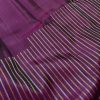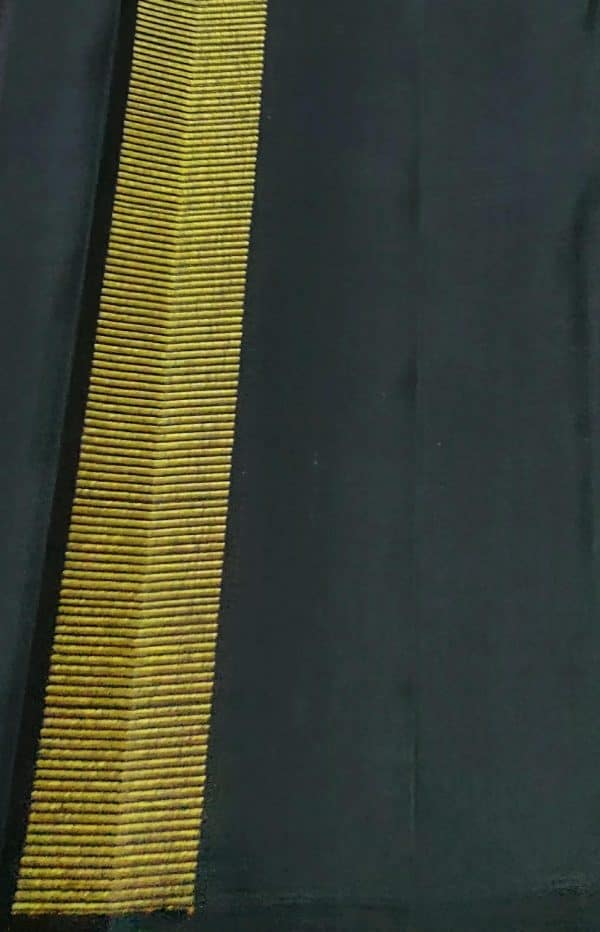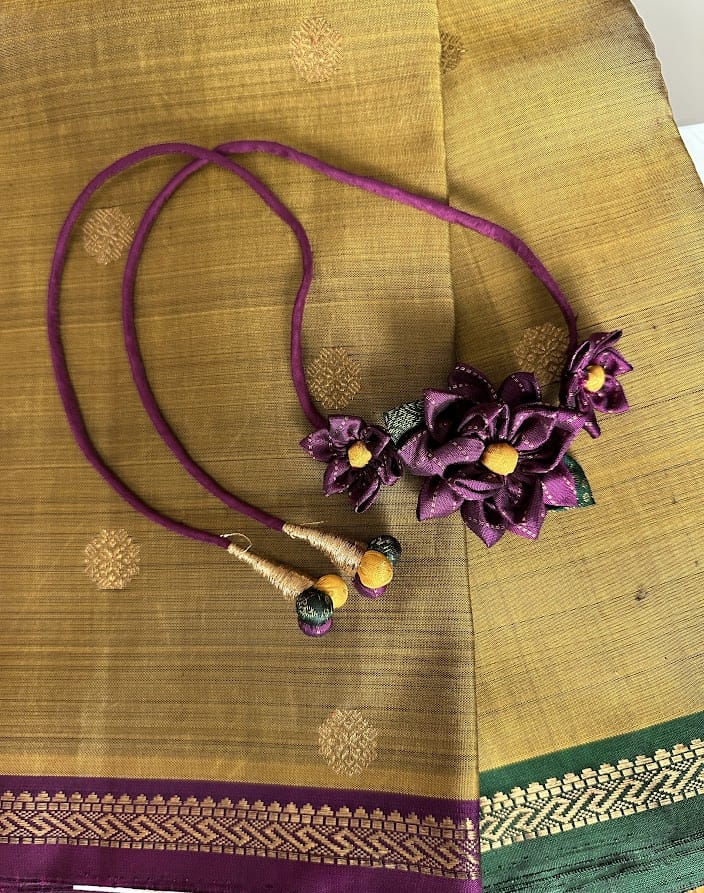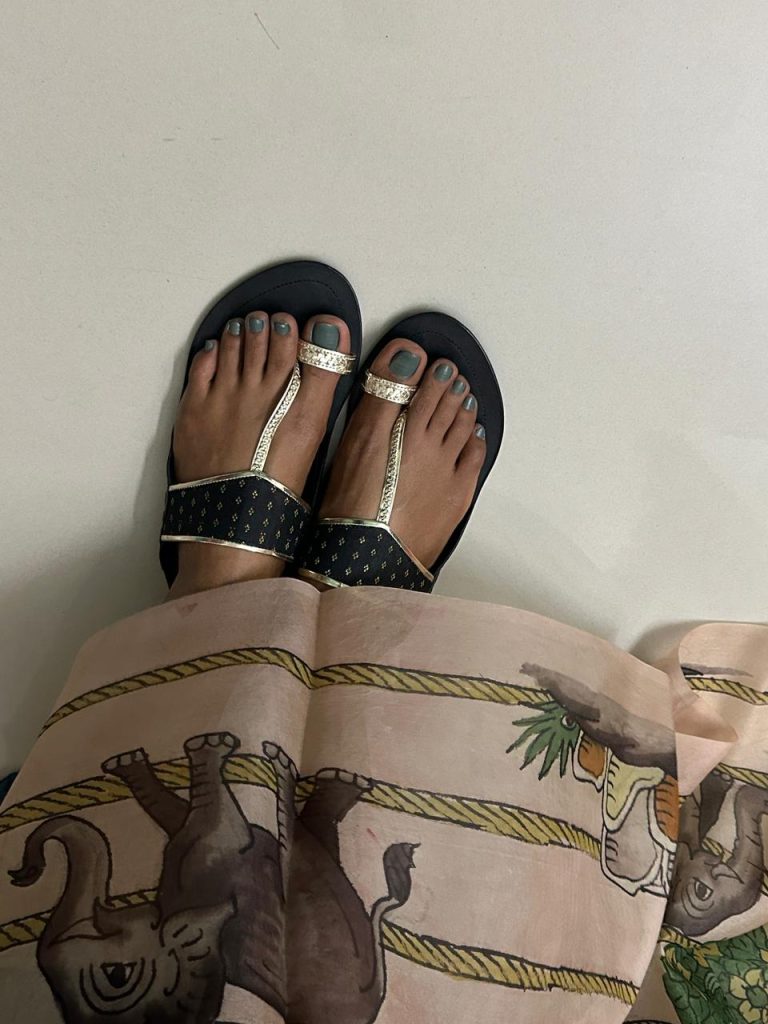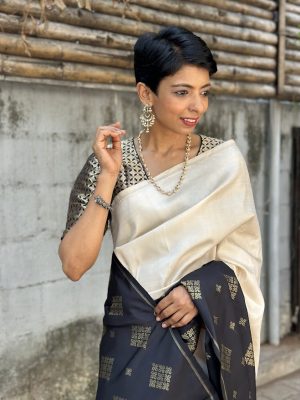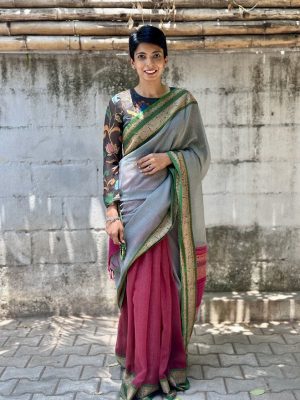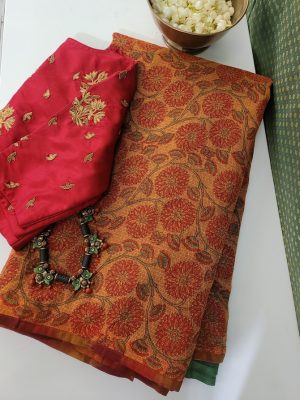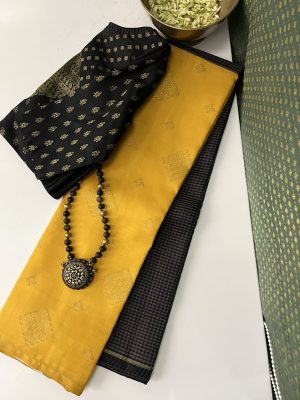Aubergine hand woven kancheepuram silk saree with pure silver and gold zari woven in a rising pattern. The blouse is plain black Kanchipuram silk with border.
This silk saree gives a stunning intricate zari woven patterns, a masterpiece of artistry and craftsmanship. The fabric tells a story of tradition and artistry in every thread. Experience luxury and heritage woven seamlessly together.
Care Instructions
Silk is made from the cocoon of silk worms. India has a rich heritage of silk weaving. Apart from Mulberry silk, India is known for producing tussar, muga and ahimsa silks. Some of these are wild and some of these are farmed commercially. Each of these silks has its own property when it comes to sheen, shine and wear. Being a natural fabric, silk does shed, wear and tear with age. However, caring for them ensures they have a long life. Silk Care & Wash
# We recommend air drying silks after every use. Silks do not require washing after every wear unless soiled.
# We recommend giving our sarees for dry cleaning for the first few washes.
# Silk sarees can be washed at home using a gentle detergent or soap nuts. Avoid soaking & scrubbing these fabrics. Any stains should be dry cleaned.
# Avoid tumble dry and instead line dry away from direct sunlight.
# Silk sarees should be regularly worn to avoid fraying. If kept in humid or dry spaces for long without wear, silks are likely to deteriorate. So wear your sarees well.
# If you are unable to wear them regularly, remove them and change folds from time to time. We do not recommend hanging them. If stacked, ensure there isn’t too much weight on the sarees.
# Avoid using naphthalene balls or other chemicals while storing silks. Heavy silks may be stores in muslin bags.
# If you can, roll them on wooden rods to store them wrinkle free. However, gentle folding works well too.
Story
Vari (வரி) literally means lines. Striped motifs on silk sarees with gold and silver zari. While some of these are woven as weft interventions, more often than not, the zari lines on warp are a result of warp arrangement. The end result of these technical interventions are perfect straight striped patterns. At Aavaranaa, we love the play of lines. Infact, we love the symmetry and geometry – playing with thickness, spacing and length to create beautiful patterns. Some of our silk sarees are a result of these striped motifs reimagined. But can we take credit for all these designs Absolutely not. Mot of these patterns are documented and woven since time immemorial. However, what we do is sit with weavers for design discussions to make changes that we believe pleases our aesthetics. The vaira oosi, oosi vanam, benaras lines and other line motifs then translate into a saree with border, selvege, pallu and blouse. The result is a harmonious looking saree in pleasing stripes. Horizontal stripes running along the warp are popularly called vaira oosi while the vertical ones are called oosi vanam.



